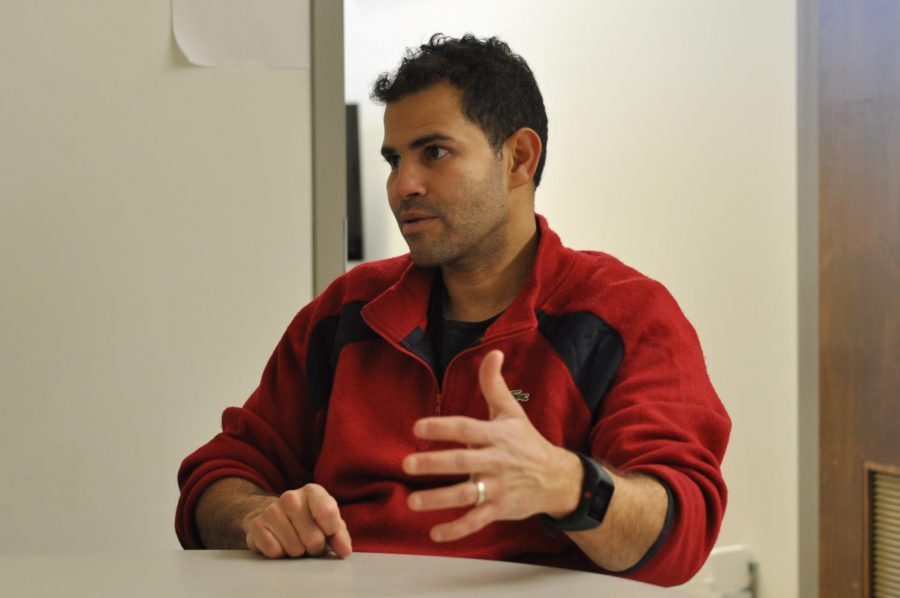Plant history, genomes, what makes chocolate so tasty
Research could narrow down where cultivation began, key to good flavor
KADEN NELSON | THE DAILY EVERGREEN
“If we can estimate the time of the split, that will give us some idea of when the population started diverging and being domesticated,” Professor Omar Cornejo said.
November 1, 2018
A WSU researcher is working with a team of scientists to analyze specific varieties of cacao plants, an essential ingredient of chocolate, to better understand the evolutionary history and create a variety that can yield optimal flavor while producing at a high rate and resisting disease.
Omar Cornejo, assistant professor in the School of Biological Sciences, is the director of the cacao genome research.
A genome refers to all the genetic material in the organism. To understand more about cacao genetics, researchers ground up the leaves of 200 individual cacao plants and sequenced the DNA in each.
Because the cacao genome was already sequenced in 2010, researchers could identify variants the specific cacao plants had compared to the reference genome.
Historically, little has been known regarding how cacao has evolved and spread throughout the world and the timing of these events, which are some of the topics the scientists researched.
The cacao genome has information about cacao as a population, Cornejo said.
“When I look at some of these genomes and when I look at their genetic makeup,” he said, “I can also infer where they came from, how they are related, how many different populations are out there.”
The researchers wanted to know more about the evolutionary history of cacao. There are 10 populations of cacao. At least one population, Criollo, was domesticated, meaning that it was bred for the specific purpose of drinking it.
When humans domesticated cacao, they took some individual cacao plants that had the traits they wanted and bred those plants to keep desirable characteristics, Cornejo said.
“In doing that and selecting only a few individuals, we are going to reduce the genetic diversity of what we’re using,” he said. “That’s going to leave a very strong signal [of domestication] in the genome and that’s what we were looking for.”
One controversy in the scientific community is where cacao was first domesticated. This was something the researchers wanted to find out.
“We’ve had all this archaeological evidence suggesting that Mesoamerica was the cradle of chocolate,” Cornejo said. “Some people in South America think that South America or the upper Amazon was the cradle of chocolate [or] that it was already domesticated there.”
The researchers concluded there was only evidence for domestication of cacao in Central America. However, Cornejo said there is still a possibility it had already been domesticated somewhere else first, but they did not find any evidence for that.
The scientists also wanted to find out how long ago domestication started. That required them to understand how closely related different populations of cacao were to each other.
One way the researchers aimed to do that is by determining when two different varieties of cacao, Curaray and Criollo, diverged.
“If we can estimate the time of the split, that will give us some idea of when the population started diverging and being domesticated,” Cornejo said.
The researchers used mathematical models to observe the genetic similarity between the two populations and determined they diverged about 3,600 years ago.
However, the scientists estimated the divergence could have happened any time between 2,000 and 10,000 years ago.
“There are many sources of uncertainty,” Cornejo said. “There is uncertainty in the process and how [variants of a gene] are being transferred and we take that into account in the simulations.”
He said when trying to select for specific traits in the plants, the breeding process results in damaging mutations that are seen in the genes of the domesticated cacao.
Criollo has a better flavor than wild cacao, but it has a lower productivity and a higher susceptibility to diseases, Cornejo said. The researchers want to understand how the population has diversified and how genetics can explain these traits so better breeding strategies can be created.
“One of the things that would be interesting to figure out is what determines higher productivity in populations like Iquitos [a wild cacao population],” Cornejo said, “and mix it with Criollo backgrounds to retain both characteristics, to have high productivity [and] good flavor cacao.”






















